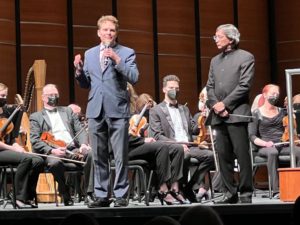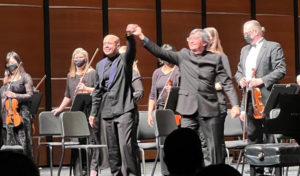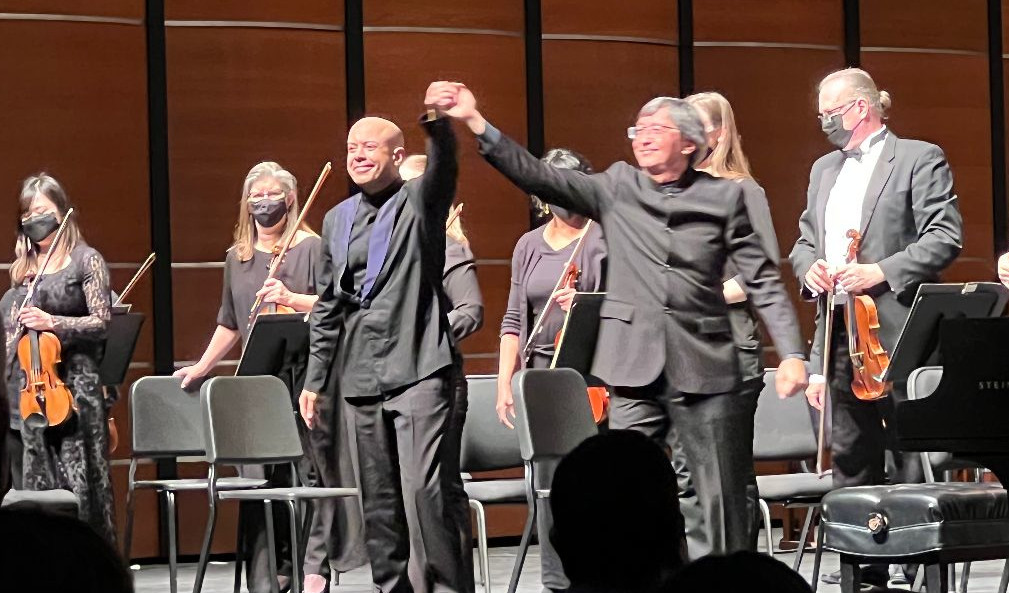The latest Austin Symphony Orchestra concert began very differently, with introductory remarks by both its CEO, David Pratt, and its conductor Peter Bay. Pratt dedicated the concert to the brave people of Ukraine, and this was followed by remarks from Bay: “It seems quite ironic that two of the works being performed tonight relate to things going on in our world. The piece by George Walker was originally called Lament to honour his grandmother he had recently passed. We share the emotions and power of that piece with all those who are suffering now. Secondly, the Emperor Concerto was written by Beethoven in 1809 in Vienna while the city was being bombarded by Napoleon’s French army. And despite the chaos and the pain of all that, he found it within himself to write music that is determined, powerful, at times militaristic, and at times like in the second movement very peaceful (almost a prayer for peace). It even ends with a dance – with hope – and we can only hope that what is happening now will be somehow a reflection of that same sort of determination and hope. We dedicate all these pieces to the people of Ukraine.”

The Lyric for Strings (as it was renamed) was composed by Walker in 1945. Its measured tones create a sombre mood, and against this delicate soundscape we are invited to lay any lamentation, great or small. Certainly it was most appropriate for the situation in Ukraine, where we see both the personal tragedies affecting individuals, and the greater tragedy worthy of lament of a country being destroyed by pure evil.
The other composition featured in the first half of the concert was the rarely performed but very fine Symphony No. 5, Western Hemisphere, by William Grant Still. Its first movement is a veritable whirlwind of emotive power; very dramatic and action-packed. Lovely notes from the harp in the second movement follow a passage where the violins lie silent, allowing the oboe a welcome, albeit brief, role. The movement ends on a slim and tidy series of notes. The third movement is quite sprightly with a prominent role for the flute. An insistent passage becomes ever more so with loud interjections from the brass section and a frenetic response from the strings. It concludes with a full-throated display of the orchestra, including drums. The fourth and final movement is very vibrant with a sweeping melody that ratcheted the orchestral volume to near the max. It has the character of telling a great and glorious tale, certainly at the level of a great symphonic score for a Hollywood movie of the Golden Age.
The Beethoven piano concerto featured soloist Stewart Goodyear, widely considered one of the finest young pianists in the world. It begins with arpeggios, trills and scales, all of which was an innovation in classical concertos. A forceful entry into the concerto is followed by a passage reminiscent of a telegraph communique. This precedes a couple of passages on the piano of profound intellect. Affording Goodyear some fun as he explored a dalliance on the keyboard.
The second movement has a restrained opening, with sensitive and delicate passages on the piano. Trilling on the keys gradually moves up the scales before the basic melody resumes. This simple melodic form ebbs and flows, finally trailing off into obscurity before the piano revives itself and the orchestra, which begins a glorious dance. This happy, emotive passage frolics along like a mare in a steeplechase. The dash to the finish is a delight as the brass section adds to the festive nature of the music. The orchestra propels itself to the banners at the finish line, marking the end of the course. A garland of flowers to the winner was a rousing ovation from the audience.
Overall, one of the Austin Symphony Orchestra’s finest performances. Next up is Slavic Splendour on Apr. 8 and 9. Visit austinsymphony.org for tickets.

